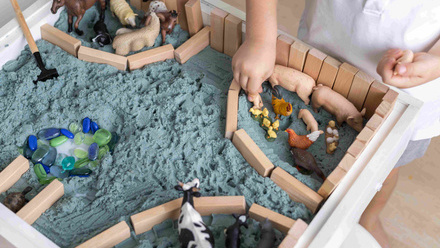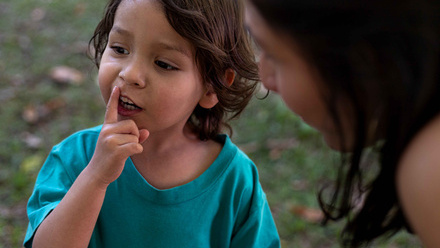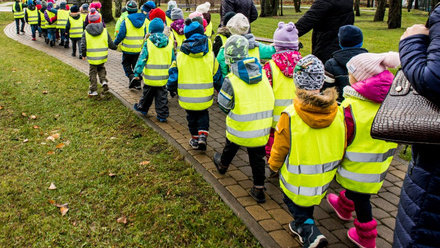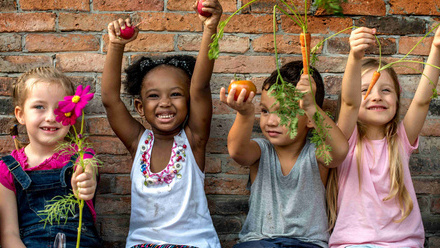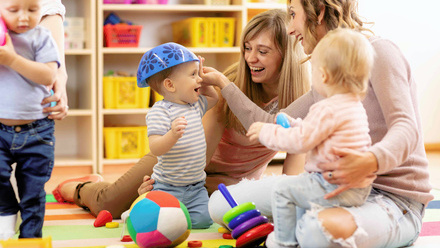How to make early reading fun
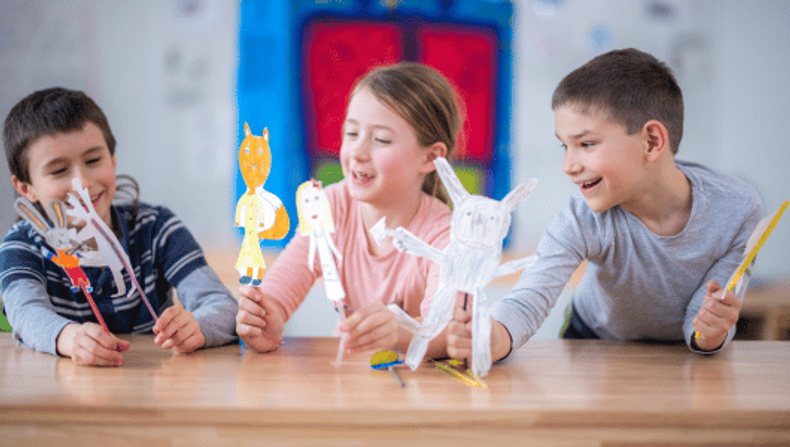
Early literacy approaches are critical not only for developing strong communication skills and a wider vocabulary, but also because they have huge benefits for our learning trajectory across all subject areas and interests. Reading for pleasure is one of the most effective ways to increase our mental wellbeing – children who engage with reading for pleasure are three times more likely to have higher levels of mental wellbeing, amongst other social advantages.
So, it is important that in our role within early education and care we make reading fun, stimulating and worthwhile to encourage a lifelong enjoyment for stories. In this learning workout we will explore some simple ways to keep our reading experiences interesting and engaging for all.
What do we mean by early reading?
Early reading is just one aspect of early literacy and refers to the development of communication and language skills, accessing different types of print, reading images and understanding narrative. For older children, this may also involve practical reading of words but the emphasis for early reading lies in building the foundations of communication and an ability to draw meaning and analysis from materials.
Whilst developing the necessary skills for early reading are a critical aim of these learning opportunities, developing a fun attitude and love of reading is also paramount to our role in early education and care where literacy is concerned. By role modelling a desire to read - and a fun and positive approach to exploring stories – we are cultivating children's desire to continue to express their passion for reading long after their experiences in the early years.
Make it relevant
The best way to engage children in the moment is by making it relevant to them. We’ve all had that brutally honest shake of the head when a toddler has lost interest in your lovingly crafted tuff tray and walked off to play with a spoon. Making reading relevant to them, their wider culture and their understanding of the world will help to create further connections between their interactions of reading and their positive attitude towards it.
One way to do this is to follow a child’s specific interests, asking questions such as: what have they enjoyed doing this week? Is there a theme that can be hooked onto with a story? This is also a great opportunity to explore culturally significant values and represent the diversity of your setting, too. There is a wonderful array of children’s books that explore diverse representations and create a positive environment to talk sensitively about differences.
Be enthusiastic
Early reading, as with many aspects of early education and care, involves your best performance yet! Educators are one of the first role models a child has outside of their family setting and it is a great privilege to have. When reading stories together as a group, or interacting in narrative play with 1-1, be enthusiastic and empowering for children to explore and experiment with their language in a safe and passionate way.
Keep it up!
Developing a strong and fun culture for reading is something that takes time and should be incorporated into routine as an important and significant aspect. A lot of the time, reading activities are used as time-fillers before lunch, or to calm excitable children down to an appropriate noise level in the afternoon.
Make sure to carve out time in your day to make reading playful and high-energy as well. This could be as part of your garden time activity or using early reading within your messy play plans. Implementing early reading strategies into our everyday and acknowledging its importance in all areas encourages children to think positively about reading and the fun it can bring.
Early reading brings so many benefits to our young children, from developing their communication and language, to building strong relationships, improving sleep and feeding their imaginations. Early education and care provisions play an important part in bringing early reading to life and making it a fun and inspiring activity for all.
So, remember:
- Keep it relevant and aim to represent the interests, culture and needs of the children you are with.
- Be enthusiastic – you are an incredible role model to the children you read with. Be positive and invigorated when you engage in narratives with young children. Keep their enthusiasm burning and encourage them to develop their own ideas throughout the reading process.
- Keep it up and sustain a culture for reading. By creating a notable space and time for reading, you are telling children that reading has a special place in your routine and the reasons why become apparent with the more dedication you give to it.
By developing our professional knowledge on how to make early reading engaging, we can empower more children to take in stories and read for pleasure from the earliest age.
Why not take look at our early literacy resources to explore more?


